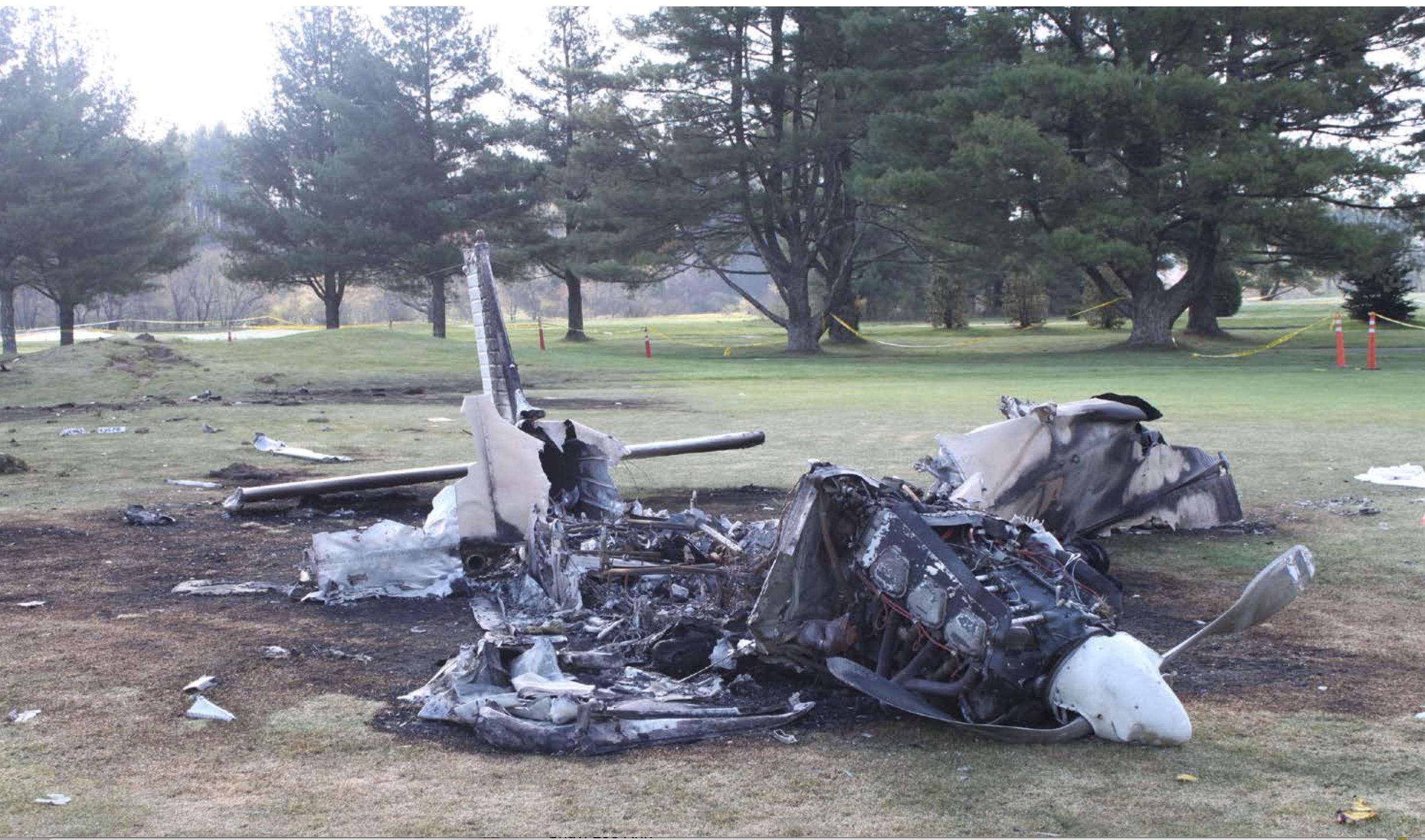
Accidents resulting from loss of control or spin have been around since the Wright brothers. In the civilian world, stalls have been and, are still, taught as a maneuver. The area is cleared. The power is set. The airplane is configured. The attitude is set. “Wait for it. Wait for it. Recover.” I think that approach is necessary but needs careful briefing. It can create an attitude of: “There’s a lot to do before a stall happens.” Perhaps that has been why stalls/spins continue to be a problem.
A stall is a split-second phenomenon. Fortunately, recovery from a stall is a split-second action. The 2019 Airman Certification Standards (ACSs) for private and commercial pilots and the Practical Test Standards (PTSs) for flight instructors seem to agree. The ACSs lump almost all stalls together under the heading of power-on stalls. I don’t quite follow that logic. Nevertheless, someone put a lot of thought into the concept of how we’re training new pilots for these events. The standards fit easily into the way I’ve always thought about stall/spin phenomena.
From the FAA: A loss of control (LOC) accident involves an unintended departure of an aircraft from controlled flight. LOC can happen when the aircraft enters a flight regime that is outside its normal flight envelope and quickly develops into a stall or spin. It can introduce an element of surprise for the pilot.
In other words, airplanes are designed for certain altitudes, angles of attack, weights, centers of gravity, speeds, attitudes, and so forth. Note that the definition states that when the airplane goes outside of these parameters, it will stall or spin. There are a lot of things to consider, but they are only contributing factors to the stall or exceedance of the stall angle-of-attack of the wing. That exceedance is the only reason an airfoil stalls. Decreasing that exceedance is the only way an airfoil recovers from a stall.
With the hoped-for post-COVID-19 increase in demand for professional pilots and the decreasing input of ex-military pilots into the civilian world, a lot of the folks we are going to be hiring are coming from civilian schools. It should also be noted that the services are considering bringing civilian-trained pilots into the military through a shortened military curriculum. It’s important to understand the background new pilots arrive with at the civilian and military front doors.
But first, we’ll look at three incidents that were fatal to at least one person in each airplane. Since I want to concentrate on the discussion of stall/spin, this article’s NTSB excerpts contain only the introductory narrative and the probable cause finding.

(1) The pilot departed on a personal flight about 10 min. before the accident. According to a witness, the pilot was conducting touch-and-go landings at the airport when the engine "cut out" and the airplane went "straight down." Two other witnesses described a steep bank or a sharp turn before the airplane descended at a steep angle and impacted the ground and then a building. The pilot was fatally injured. Ground scars at the accident site and damage to the airplane were consistent with a left-wing-low attitude and the engine operating at high power at the time of impact. The airplane's steep bank and descent at a steep angle were consistent with a loss of control.
The examination of the airplane and engine revealed no mechanical malfunctions or failures that would have precluded normal operations. Toxicology testing revealed the pilot was using a combination of phenobarbital and phenytoin at the time of the accident. Although these drugs can cause various impairing symptoms, the type of impairment that they cause is unlikely to lead to a sudden loss of control. Both drugs can be used to prevent seizures in patients with epilepsy. Although a seizure or other neurologic event causing sudden incapacitation could have occurred without leaving autopsy evidence, there was not enough available information to indicate that the pilot had an increased risk of such an event. Thus, the investigation could not determine, based on the available information, whether the pilot's loss of airplane control was related to a medical issue. The NTSB determined the probable cause of the accident to be the pilot's loss of airplane control for reasons that could not be determined based on the available evidence.
(2) The airplane landed about 15 mi. south of Watsonville Municipal Airport (KWVI), California. No radio communications to or from the airplane were recorded at KWVI, en route or at Marina Municipal Airport (KOAR), California. No witnesses were identified who could provide information about the pilot's activities at KOAR in the minutes preceding the accident, including whether the accident takeoff was part of a touch-and-go landing, or was preceded by a full-stop landing.
However, two witnesses observed the takeoff before the accident. One witness at KOAR, who was located about midfield, reported that he saw the accident airplane lift off, and stated that the landing gear retracted immediately after the airplane became airborne. That witness and another witness reported that they saw the airplane begin an unusually steep climb in an unusually high nose-up attitude. The airplane then pitched over to an approximately level attitude and began to yaw to the left. During that nose-left yaw, the nose and left wing dropped, and the airplane began a spin. The airplane spun to the ground, and a fire erupted immediately. Stall and loss of control during the initial climb occurred.
(3) The private pilot and two passengers were conducting a local flight from the pilot's home airport. One witness stated that his attention was drawn to the airplane due to its "very fast" landing approach. The airplane then disappeared from his view. Shortly thereafter, he saw a plume of smoke in the area of a golf course on the northwest side of the airport. Several witnesses on the golf course stated that the airplane appeared to be taking off, and noted that it was "struggling," that it was "too low," and was "bobbing up and down." The airplane impacted a stand of 75-ft.-tall pine trees and came to rest on the golf course, where it was consumed by a post-crash fire. The rear seat passenger was fatally injured; the pilot and front seat passenger received serious injuries. Neither the pilot nor the passenger could recall the events of the accident flight.
Post-accident examination of the airframe and engine revealed no anomalies that would have precluded normal operation. The landing runway measured 2,700 ft. long by 40 ft. wide. Given the witness’s observation of the airplane's fast approach speed, it is likely that the pilot initiated a go-around due to excessive airspeed and/or a lack of runway remaining on which to stop; however, it could not be determined when the pilot began the go-around maneuver. The airplane's low altitude as it climbed away from the runway suggests that the pilot may have initiated the go-around near touchdown or possibly even after touching down. Had the pilot started the go-around earlier, after recognizing the airplane's unstabilized approach due to excessive airspeed, he would have allowed more time to re-configure the airplane, establish a positive rate of climb, and clear the trees near the end of the runway. However, the late go-around placed the airplane in close proximity to the trees, from which the pilot subsequently failed to maintain lateral clearance.
Each of these incidents involves a stall/spin loss of control before the airplane crashed. Again, loss of control in flight is always preceded by a stall, often leading to a spin. As you can see from the photos, the results are not pretty.
Spins also have been a source of discussion ever since folks began flying. You can’t have a spin without a stall. So, spins belong in this discussion.
In U.S. Air Force pilot training in the 1960s, we learned about spins and how to recover from them on gut-wrenching T-37 rides. (Yes, Virginia, grandpa had jets in the sixties.) The spin entry was made by setting a relatively low power setting, pulling the old Tweet to a nose-high attitude and, as it stalled, easing in full rudder in either direction while simultaneously easing the stick all the way aft.
The sturdy little beast would fall off on a wing and then, generally, come back around to the initial heading, nose up and seemingly pause. It was as if it were asking, “Are you sure?” If you continued to hold the stick back and the rudder in, the “ride” began in earnest. The airplane would drop the nose almost to vertical, then it would come back up to about 30 deg. below the horizon and enter a stable spin. As with all airplanes, if you let the nose lower, the rotation rate would increase as the airplane speed increased. The recovery went something like this:
(1) Check throttles idle.
(2) Stick full aft and hold, rudder and ailerons neutral.
(3) Determine direction of spin (turn needle).
(4) Full opposite rudder.
(5) One turn later, stick full forward and hold.
(6) Recover from the ensuing dive.
The fifth step usually resulted in a very uncomfortable, but very positive recovery.
But an interesting point to note was that the Air Force, even back in the 1960s, had another “spin” maneuver in the syllabus. This was called the “spin prevention.” That maneuver is the genesis for more discussion.
Editor’s note: This is the first of a two-part article. The next will be on spin prevention.






Comments
And, by the way Ross, the T-37 spin, you wrote about, made me feel as if I were in a bath tub that fell out of a window from the top floor.
Having experienced (as a student) and and demo’d (as an IP) helicopter stuck pedals to touchdown, I much prefer that to the experience of the inverted version of a fully developed stall. Regardless, the aircraft does not care if you understand physics and aerodynamics. It will happily kill you either way if you give it the opportunity. Prepare accordingly.